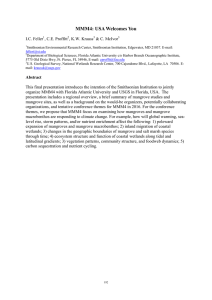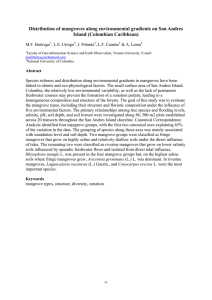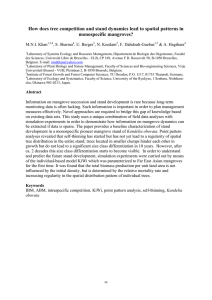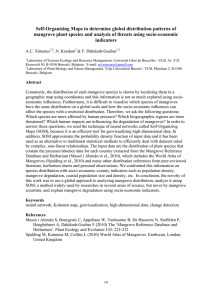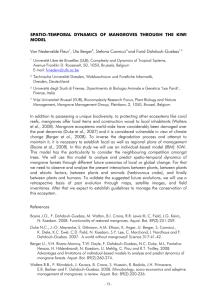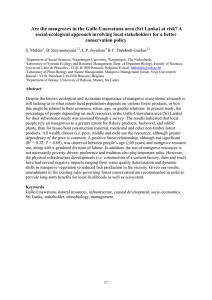Mangrove habitat suitability under climate change in the Bay of... rim M.S.I. Khan
advertisement
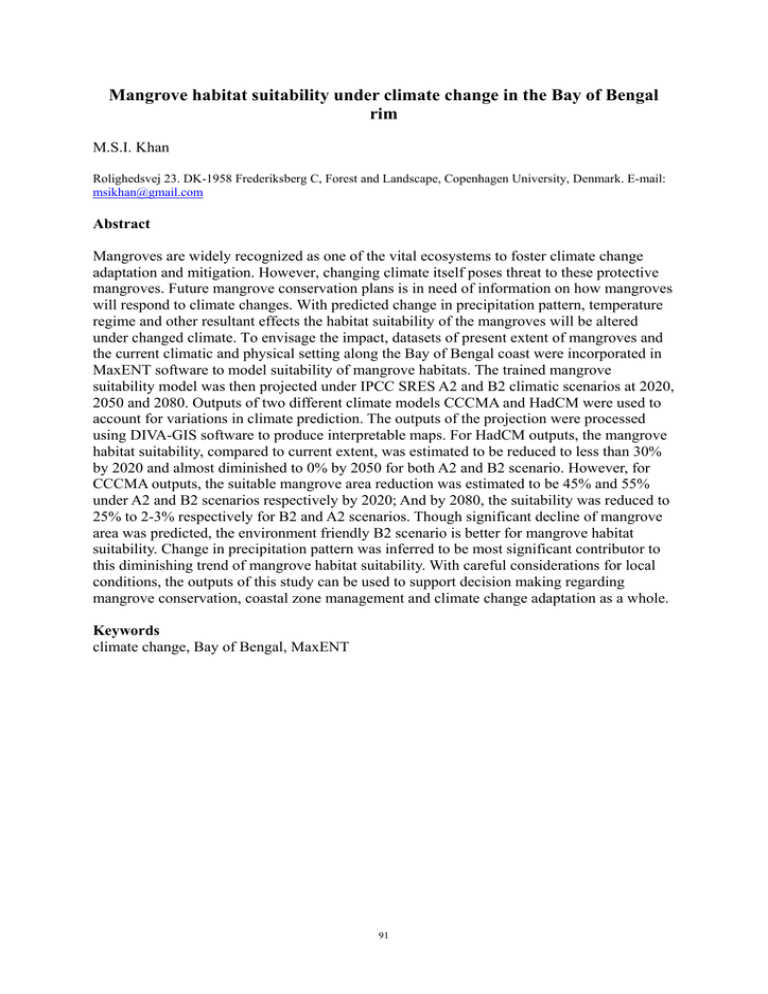
Mangrove habitat suitability under climate change in the Bay of Bengal rim M.S.I. Khan Rolighedsvej 23. DK-1958 Frederiksberg C, Forest and Landscape, Copenhagen University, Denmark. E-mail: msikhan@gmail.com Abstract Mangroves are widely recognized as one of the vital ecosystems to foster climate change adaptation and mitigation. However, changing climate itself poses threat to these protective mangroves. Future mangrove conservation plans is in need of information on how mangroves will respond to climate changes. With predicted change in precipitation pattern, temperature regime and other resultant effects the habitat suitability of the mangroves will be altered under changed climate. To envisage the impact, datasets of present extent of mangroves and the current climatic and physical setting along the Bay of Bengal coast were incorporated in MaxENT software to model suitability of mangrove habitats. The trained mangrove suitability model was then projected under IPCC SRES A2 and B2 climatic scenarios at 2020, 2050 and 2080. Outputs of two different climate models CCCMA and HadCM were used to account for variations in climate prediction. The outputs of the projection were processed using DIVA-GIS software to produce interpretable maps. For HadCM outputs, the mangrove habitat suitability, compared to current extent, was estimated to be reduced to less than 30% by 2020 and almost diminished to 0% by 2050 for both A2 and B2 scenario. However, for CCCMA outputs, the suitable mangrove area reduction was estimated to be 45% and 55% under A2 and B2 scenarios respectively by 2020; And by 2080, the suitability was reduced to 25% to 2-3% respectively for B2 and A2 scenarios. Though significant decline of mangrove area was predicted, the environment friendly B2 scenario is better for mangrove habitat suitability. Change in precipitation pattern was inferred to be most significant contributor to this diminishing trend of mangrove habitat suitability. With careful considerations for local conditions, the outputs of this study can be used to support decision making regarding mangrove conservation, coastal zone management and climate change adaptation as a whole. Keywords climate change, Bay of Bengal, MaxENT 91
